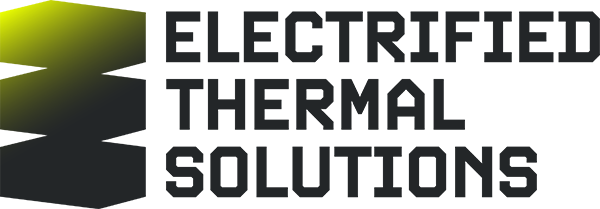According to the 2022 “Net Zero Heat” report by McKinsey, 50% percent of global energy consumption is for heating and cooling in 2019. About 70% of this energy comes from burning fossil fuels, responsible for 45% of all energy-related annual CO2 emissions.
The challenges to decarbonizing industrial and large-scale space heating are two fold: – the first is that the least expensive fuel alternative, electricity, is vastly more expensive than fossil fuel alternatives utilized today and the second is that existing heating elements for converting electricity to heat cannot reach temperatures required for some of the most energy intensive and highest polluting industries such as steel and cement. Electrified Thermal Solutions’ (“ETS”) Joule Hive Thermal Battery (“JHTB”) utilizes an MIT-developed technological breakthrough to simultaneously solve both problems. ETS has solved the heating element problem by making a small change to the chemistry of regular refractory bricks that make them electrically conductive (“E-Brick”) and therefore able to function as a heating element that can convert electricity to near-flame temperatures (up to 1,800C/ 3,270F).
These record-setting temperature capabilities enable the JHTB to provide the heat at highest temperatures required for any industrial process, including the hardest to abate. As a thermal battery the JHTB also solves the electricity cost challenge because it dramatically cuts the cost of decarbonization because it can charge opportunistically either directly from renewables or during “off-peak” hours from the grid when electricity is cheapest. Its higher temperature capability enables the JHTB to store more energy per unit volume than any other thermal battery and therefore provide the lowest cost avenue to decarbonize industrial and large-scale space heating. ETS’s JHTB also has the unique potential to enable the complete decarbonization of the two hardest to decarbonize industries, cement and steel.
The challenge with primary steelmaking and cement is that a large proportion of emissions are not from heat but from process emissions associated with chemical reactions that are core to their products. Since ETS can eliminate combustion from the process of driving these chemical reactions, it can create a pure CO2 stream from process emissions enabling inexpensive CO2 capture and utilization or sequestration without the need for separation.

